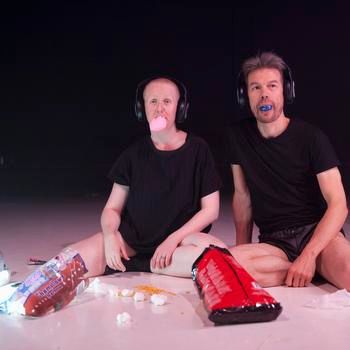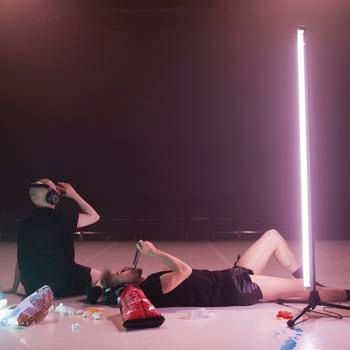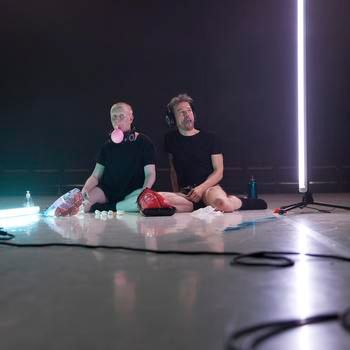“Private Dancer” is the third part of the trilogy of performances named after dance movies. The previous parts “Dirty Dancing” and “Flashdance” premiered at Zodiak in 2014 and 2016. In this series of pieces we have emphasized the juxtaposition of non-human agents – such as dyed sour milk and a huge black plastic bag – with human performers on stage, as well as the multisensory experience of the audience.
The basis of “Private Dancer” is in sound and its kinaesthetic nature. Sound is generated through the movement of something. It travels to our ears, and there, through the vibrations of tiny parts in our body, is translated to a sensation of what happened. Every sound causes a unique reaction within us. It is impossible to foresee what a sound will mean to a person. When a sound is detached from its source, it is free to move and transform into each listener’s personal, imaginary landscape.
In “Private Dancer” sounds are created through the movements of the mouth. The mouth is an extremely active cavity – it fills with food and breath, leads us from the depths of the body to the surface of the skin and expresses our inside to the outside world. We have looked at the mouth as a guarded gateway. What we let in and out through our mouth is regulated by norms that not only uphold our physical body and its basic needs, but also reveal our social and societal relationships of others.
“Private Dancer” invites the audience to listen with their entire body. Through listening the performance stretches towards the other, the boundaries of bodies and their vast possibilities.
W A U H A U S is a Helsinki-based arts collective, active in today's performance field. The members of W A U H A U S are director Anni Klein, scenographer Samuli Laine, choreographer Jarkko Partanen and sound designers Jussi Matikainen and Heidi Soidinsalo. They create their own work in various spaces, from small experimental theatres to huge stadiums. The group's works have been described as contemporary performances that utilize popular culture, and are simultaneously entertaining as well as capable of illuminating the structures of our society. The works of W A U H A U S are defined by an aesthetic, in which different materials, light and sound interwine with living performers.



